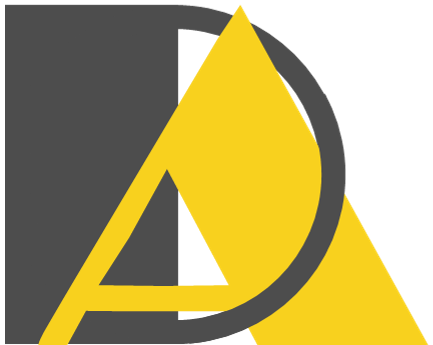Hidden Curriculum
“The school curriculum I define as everything that happens to a young person in the school”
Sir John Dunford
I teach project management, and my courses often last for 2-3 days. Each course is tailored to the expectations and requirements of the organization requesting the course. Until now, I've defined course objectives, content, and sometimes outcomes without referencing curriculum or syllabus concepts. However, the concept of hidden curriculum encouraged me to explore these concepts with regard to the courses I teach in the business world.
The following statement from Sir John Dunford's speech particularly struck me: "The school curriculum I define as everything that happens to a young person in the school, and the national curriculum is only a tiny part of that" (Dunford, 2013). I decided to explore the meaning of this statement within a business context by replacing the words School/National Curriculum with Business/Organizational Training & Development Programs.
To my mind, a course syllabus within the business context is an informal contract between management, the instructor, and the learners of an organization. As an instructor, I usually outline these contracts based on the management's expectations and the learners' needs.
All contracts serve predefined goals and strategies. And considering the syllabus to be a type of contract, I contemplate questions such as: What does this contract serve? Can organizational training and development programs be regarded as the "Curriculum" of those Syllabi? So, what would be the hidden parts of this curriculum?
Curriculum is a broad concept and the central focus of education. Students, teachers, parents, and communities are all stakeholders within this concept (Priestley & Philippou, 2019). The curriculum clarifies "What" and "How" something should be taught, and an effective one requires a balanced approach that considers both questions in education. (Egan, 1978).
In his article, Claus Nygaard (2020) defines curriculum as the cornerstone of all education and explores four different definitions: 1. Course curriculum, 2. Clustered curriculum, 3. Academic curriculum, and 4. University curriculum, all four of which also resonate with the circumstances of the business world.
Within the business context, the stakeholders of an educational system become employees, instructors, department managers, executives of organizations, and shareholders. As there is a growing need for competent experts with leadership skills in today's fast-changing, complex business world (Moldoveanu & Narayandas, 2019), most organizations are developing strategies and using versions of the curriculum defined by Claus Nygaard (2020).
A syllabus is a list of topics to be taught and learned for a specific period of time or a program derived from the curriculum (Musingavi et al., 2015), or as insightfully stated on the Stanford University website: "A syllabus can tell you nearly everything you need to know about how a course will be run and what will be expected of you" (Stanford Undergrad). As this statement is addressed directly to the learners, it made me consider the learners to be an active part of the syllabus paradigm as well.
"The Hidden curriculum is a set of influences that function at the level of organizational structure and culture, affecting the nature of learning, professional interactions, and practice" (Roache et al., 2023). I would adapt this definition to the business concept as follows: Within organizational, cultural, and historical contexts, unspoken or implicit professional, social, and cultural messages that are communicated to employees within a corporate environment are considered part of the hidden curriculum. Last summer, I taught a one-day course, "The Art of Delegation," where building trust was one of the main themes. During the course, the attendees expressed their distrust towards the management who organized the course and complained that the management's leadership style was not building trust within the organization, a strong indicator of a "Hidden Curriculum."
I now have a strong belief that a curriculum is the cornerstone of education, and this concept will be an effective tool for me when designing courses. I will start utilizing it to explore the client organization's high-level objectives and expected outcomes.
It is my experience that not all attendees enter a classroom as "Learners." I have seen attendees who attended a course due to the guidance of their supervisors, even without reading the course syllabus. I will design and use the curriculum concept to turn an "attendee" into an active "Learner." I expect sharing the benefits and the expected outcomes with the attendees will improve the learners' motivation for the course.
During my courses, attendees often readily share their insights on organizational climate and management styles within their organizations. This spontaneous exchange offers valuable perspectives and opportunities for management to enhance the organizational climate by addressing their implicit "Hidden Curriculum." I plan to leverage this concept in communicating my observations and learners' feedback to the organization's management.
The idea of the curriculum concept, particularly the "Hidden" aspect, has significantly heightened my awareness. This understanding will be invaluable as I design future courses, providing opportunities to enhance my teaching performance.
References
Dunford, J., (2013). The Hidden Curriculum. Teaching Leaders National Conference 2013, https://www.youtube.com/watch?v=0GArXFThb_E
Egan, K., (1978). What is Curriculum?, Curriculum Inquiry, (volume 8, number 1, 66-72). Blackwell Publishers. https://www.academia.edu/29839677/What_is_Curriculum
Moldoveanu, M., Narayandas, D. (2019). The Future of Leadership Development. Harvard Business Review Home, https://hbr.org/2019/03/the-future-of-leadership-development
Musingavi, M., Mhute, I., Zebron, S., Kaseke, K.E. (2015). Planning to Teach: Interrogating the Link Among the Curricula, the Syllabi, Schemes, and Lesson Plans in the Teaching Process. Journal of Education and Practice, https://files.eric.ed.gov/fulltext/EJ1082472.pdf
Nygaard, C. (2020, April 13). What is Curriculum. Claus Nygaard. https://lihe.info/what-is-curriculum/
Priestley, M., Philippou, S. (2019). Curriculum is-or should be-at the heart of educational practice. British Educational Research Association. https://www.bera.ac.uk/blog/curriculum-is-or-should-be-at-the-heart-of-educational-practice
Roache,D., Desanghere, L., Robertson-Frey, T., Saxena, A. (2023) Hidden Curriculum. PGME Information Sheet - Post Graduate Medical Education, University of Saskatchewan, college of medicine, https://medicine.usask.ca/documents/pgme/202303015-hidden-curriculum1.pdf
Stanford Undergrad (https://advising.stanford.edu/current-students/advising-student-handbook/what-syllabus) provides academic advising to students.
